
Air pollution and dementia
As the World population life expectancy increases, more of us are likely to succumb to 'old age' conditions like dementia. There are a number of factors thought to play a part. Is air pollution one of them?
Summary: A meta-analysis of research studies into the link between air pollution and incidences of clinical dementia has found a link at concentration levels of PM2.5 particles below the limits currently set by a number of country environmental agencies.
Why this is important: There are 55 million people with dementia globally and that is expected to rise to almost 153 million people by 2050. The estimated global cost of medical, social and informal care associated with dementia in 2019 was more than US$1.3 trillion with more than half attributable to care provided by informal carers.
The big theme: Air quality in general, and pollution in particular, have various significant investment and decision-making implications. Air pollution can be both naturally occurring or produced by human activity. Decreasing pollution with the aim of reducing human illness and suffering should be a goal unto itself. In practice it is also important to consider how such initiatives, that more often than not increase costs and dig into profits, will be beneficial to business and society in the long run, whether it be through decreased healthcare costs, increased health and productivity of the workforce, and reputational gains for such decisions.

The details
Summary of a research paper published in the BMJ:
Researchers from the Harvard TH Chan School of Public Health (Wilker, Osman and Weisskopf) performed a systematic review of 51 studies and subsequent meta-analysis including 16 of those studies looking at potential links between ambient air pollution and dementia.
Their conclusion was that PM2.5 might be a risk factor for dementia. Interestingly the link between PM2.5 and clinical dementia seemed to exist below the current US Environmental Protection Agency (US EPA) annual standard of 12 mcg / m3 (micrograms per metre cubed) and well below the UK and EU limits of 20 mcg / m3 and 25 mcg / m3 respectively.
Nitrogen dioxide (NO2) and nitrous oxides (NOx) may also be risk factors but less data was available.
The findings support the importance of limiting PM2.5 and other air pollutants from a public health perspective.
Why this is important
The link between ambient air pollution and life expectancy has been well documented. For example, in a 2020 study conducted by the Max Planck Institute for Chemistry it was estimated that global excess mortality from all ambient air pollution was between 7.11 and 10.41 million per year. In addition it was estimated to lower life expectancy by between 2.3 and 3.5 years - more than from smoking tobacco.
Dementia, with 55 million sufferers globally and almost ten million new cases per year, is the seventh leading cause of death and a significant cause of disability and dependency among the elderly. A 2019 Global Burden of Disease study estimates that global cases could rise to almost 153 million by 2050, particularly as the World population is getting older.
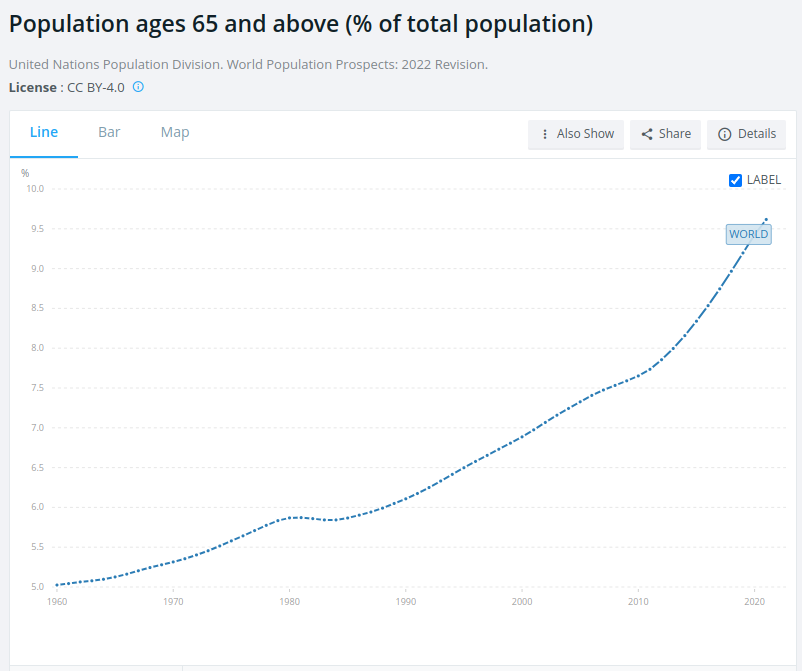
It is a blanket term for a number of diseases that affect a person's memory, their ability to think and perform everyday activities. There is no cure currently and so support for people living with the illness comes in the form of symptom management, self-care (for example, staying physically and mentally active) and provided care - both formal and informal, the latter often by family members or friends.
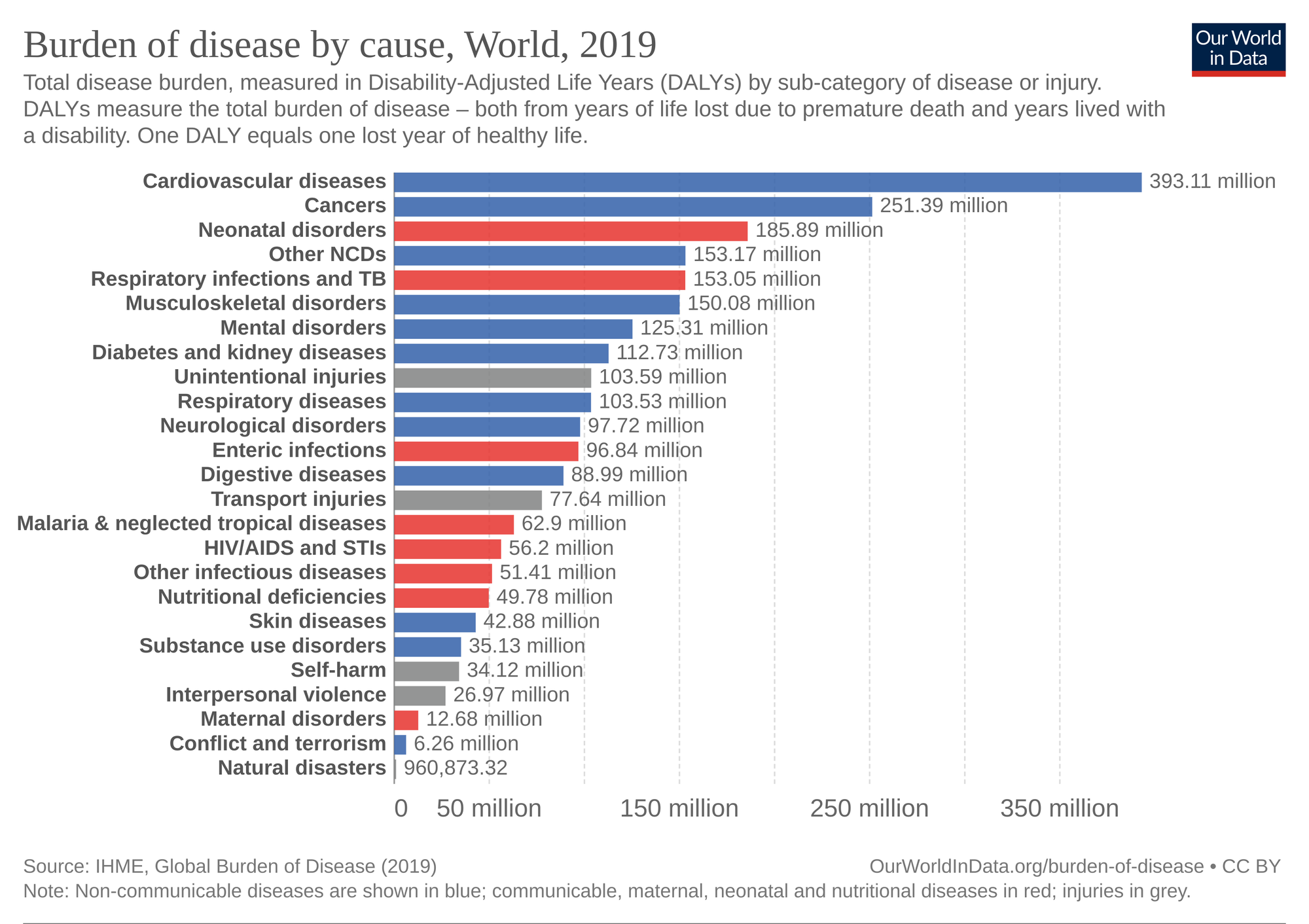
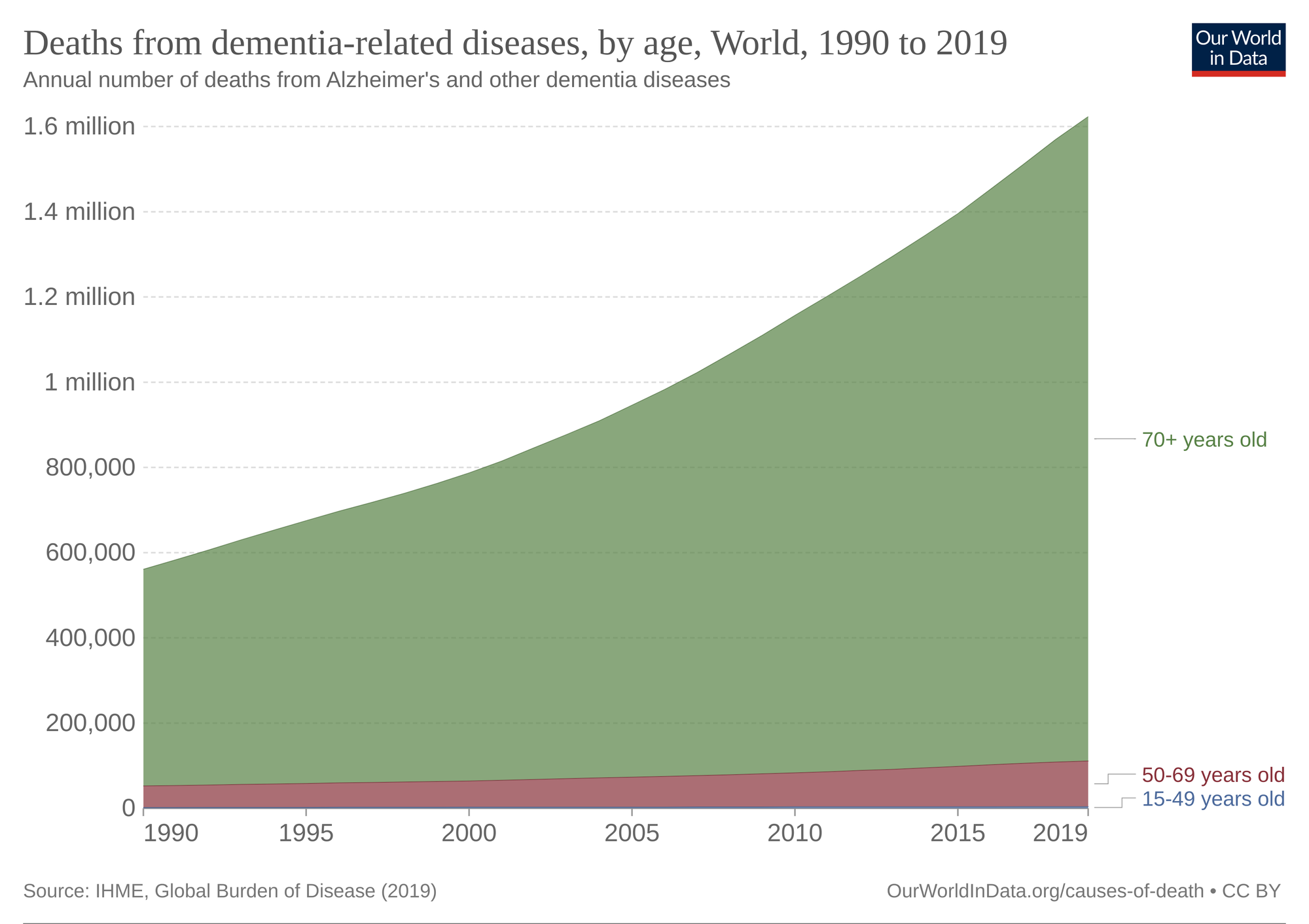
The disease disproportionately impacts women. The female-to-male ratio of people with the dementia is 1.69 and women experience higher disability-adjusted life years (how many years of life expectancy are lost due to early death or years lived with a disability) due to dementia. In addition they are also indirectly impacted as women also provide 70% of care hours for people living with dementia.
In 2019, high socio-demographic index (SDI) countries accounted for more than 56 percent of dementia cases, but looking out to 2050, the biggest growth rate in cases is expected to come in low SDI countries. Geographically East Asia (of which the majority is China) has the most number of cases at almost 16 million. North Africa and Middle East are forecast to see growth of 367 percent by 2050.
Around two-thirds of cases are thought to be Alzheimer's disease. Some early promising treatments for patients at early stages of the disease could offer hope of slowing or even halting the progression of the disease - Lecanemab (Biogen and Eisai / FDA approved) and donanemab (Lilly / Phase III trial concluded, awaiting approval) - but there is still no cure. Other conditions under the dementia umbrella include vascular dementia, dementia with Lewy bodies (abnormal deposits of proteins inside nerve cells) and frontotemporal dementia (degeneration of the frontal lobe of the brain). However, the distinctions between the different forms are not rigid.
The estimated global cost of medical, social and informal care associated with dementia in 2019 was more than US$1.3 trillion with more than half attributable to care provided by informal carers.
What's the link?
A number of long term studies looking at data from Seattle and Canada have suggested a link between proximity to air pollution, particularly traffic related, and dementia risk. Neuroscience pioneers Biogen, for example, have centred their Sustainability initiative around the link between harmful emissions, air pollution and brain health with their Healthy Climate, Healthy Lives programme. Indeed the Wilker, Osman and Weisskopf study was part funded by Biogen, although they played no role in study design, the collection, analysis or interpretation of the data or the writing of the report.
The findings of the study made a link between concentrations of PM2.5 particles and incidences of clinical dementia. 'PM2.5' are tiny pieces of solids or liquids in the air that are 2.5 microns wide or 1/400 of a millimetre. They are more likely to get into and deposit on the surface of the deeper parts of the lung, for example. Professor Weisskopf from the study team commented that even a reduction in annual levels of just 2 micrograms per cubic metre should lead to lower dementia rates.
Biologically, what is happening in our bodies when we are exposed to PM2.5 particles that can cause dementia? No one knows for sure. A number of hypotheses have been put forward. Research (for example) suggests that particulate matter results in inflammation, damage to the blood-brain barrier, changes in neurotransmitter levels (chemicals that allow communication between our nerve cells) ultimately leading to nerve cells dying. At the moment it is difficult to see those mechanisms in play in humans.
Biological mechanisms have been identified for other conditions including lung cancer 👇🏾

In January 2023, the US EPA proposed to lower the allowable concentration of PM2.5 to between nine and ten mcg / m3 on average per year from the current 12 mcg / m3.
In 2021, the WHO updated their PM2.5 annual mean air quality guideline to five micrograms per cubic metre. The previous 2005 guideline level was 10 mcg / m3. This means that in 2019, 99 percent of the world population was living in places where the WHO’s strictest air quality guideline levels were not met.
Disproportionate impact
We already highlighted the disproportionate impact that dementia has on women. A report published in 2022 found that low income and populations of colour bear a disproportionate burden of PM2.5 associated health impacts. Here are their findings based on race:
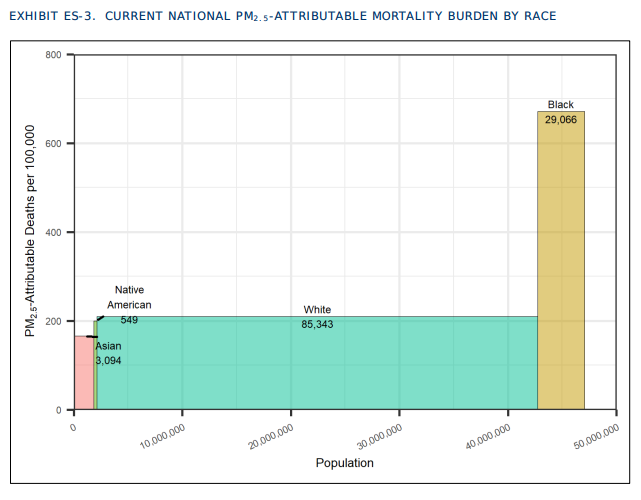
Here are some additional findings from a World Bank study illustrating the income group variation:
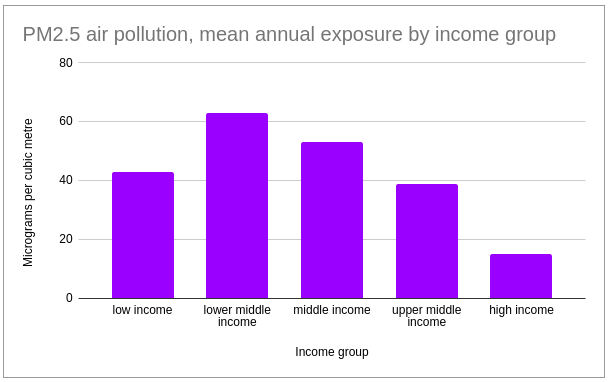
In April 2021, a law requiring Massachusetts to assess the social impact of projects alongside environmental risks, particularly the effects of pollution levels on residents, was signed by the then State Governor Charlie Baker. The law defines the vulnerable "environmental justice" communities disproportionately affected by pollution through parameters of race, income and English-language proficiency.
The aim of the Massachusets law is to increase communities’ ability to advocate for their needs with regard to potentially damaging infrastructure projects. The law also made it harder for fossil fuel projects to be sited in communities with a larger proportion of residents of colour. It did not affect existing projects.
It is worth noting that a proportion of PM2.5 comes from naturally occurring sources such as pollen and sea-spray. In areas such as Africa and West Asia that are close to deserts, windblown dust is a major source. Man-made sources include domestic combustion, industrial processes, manufacturing, construction and road transportation.
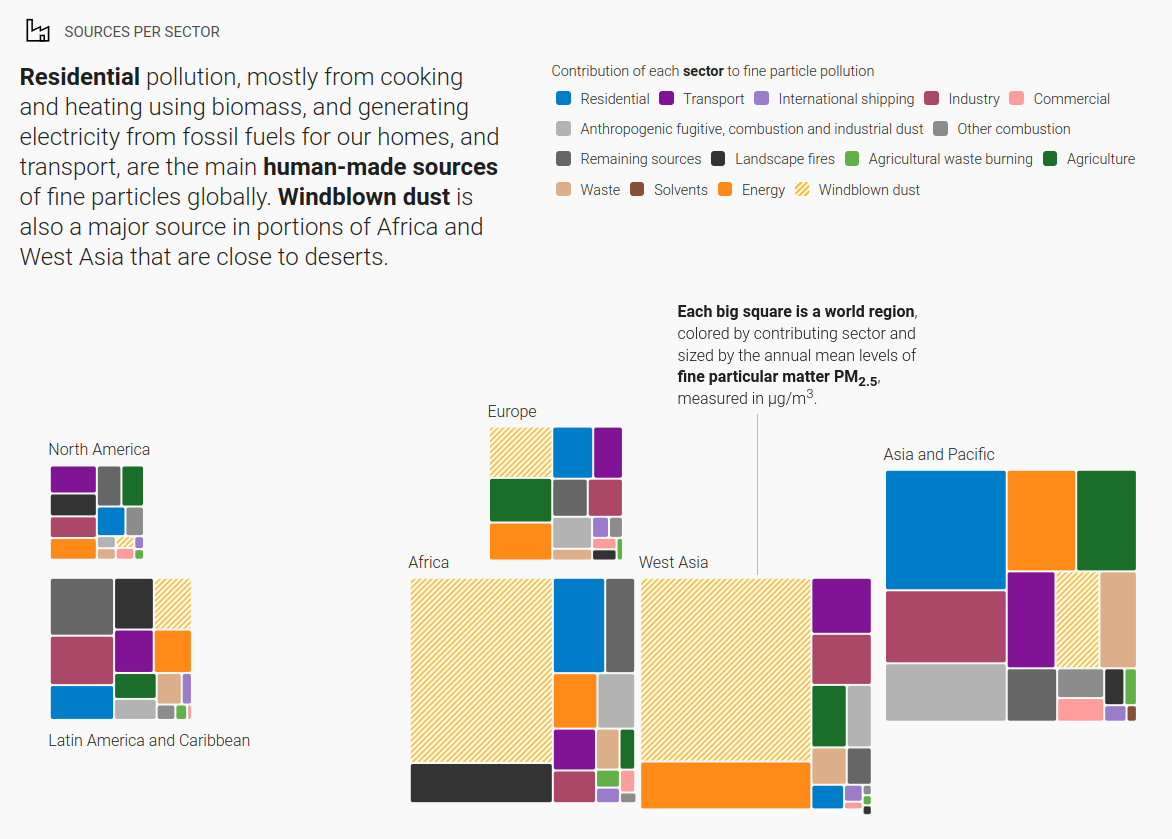
Having said that, there are plenty of actions that regulators, companies and individuals can take to reduce that pollution and our exposure to it. With more health conditions being linked to it, the imperative is there more than ever.
We shall be exploring the broader impacts of air pollution on health and well-being in a forthcoming Deep Dive.
Something a little more bespoke?
Get in touch if there is a particular topic you would like us to write on. Just for you.
Contact us
Please read: important legal stuff.


